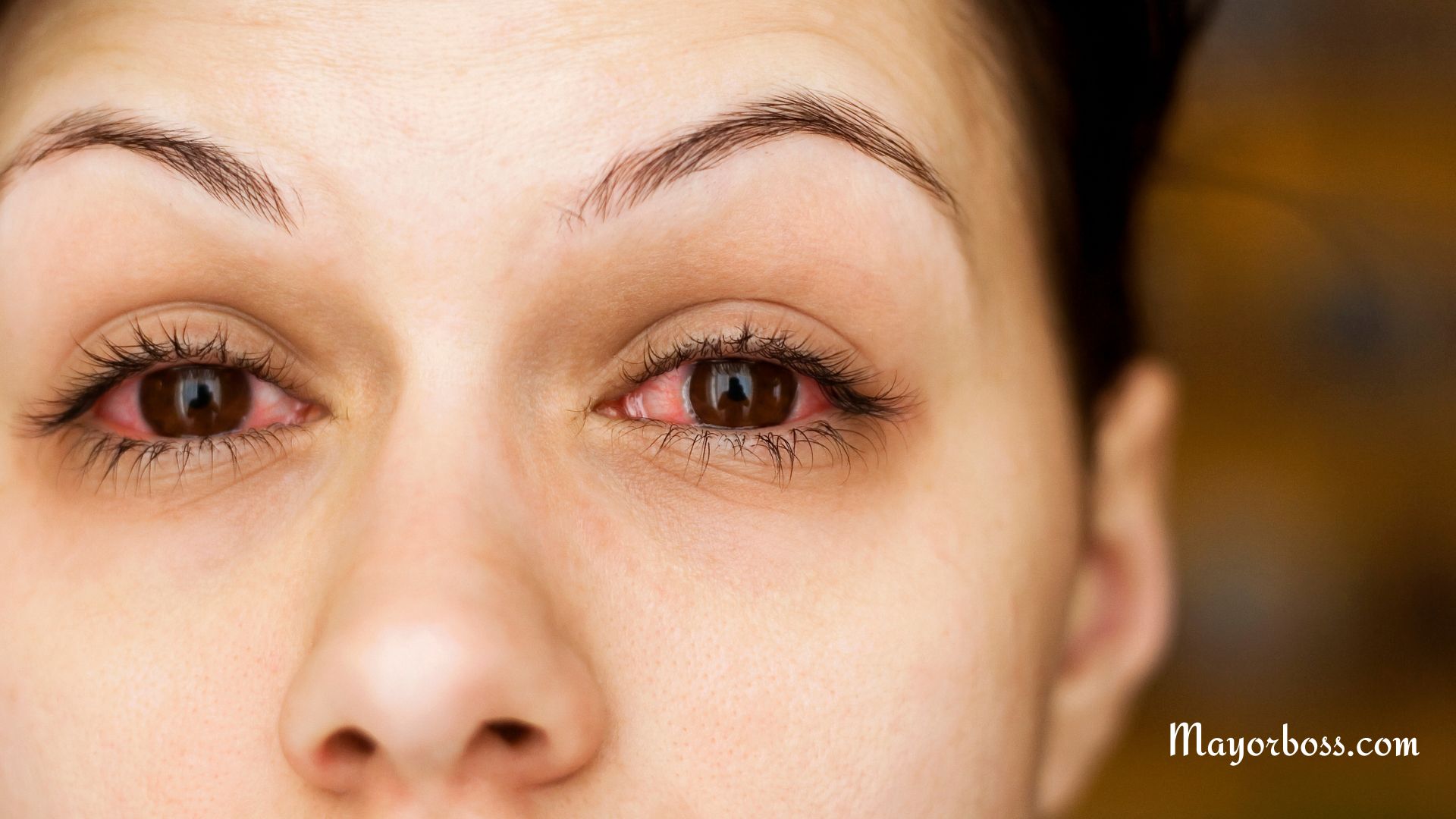Eye Infections
Eye infections can be a real pain, disrupting your day and causing discomfort. From redness to itching, these infections occur when harmful microorganisms invade your eye. They can be caused by bacteria, viruses, or fungi. Luckily, treatments are available to help you get back to feeling like yourself. In this article, we’ll look at the symptoms, different types of eye infections, and the treatments you can use to clear them up.

What Are the Symptoms of an Eye Infection?
Itching and Redness
When you’re dealing with an eye infection, you’ll likely notice that your eye becomes red and itchy. These symptoms are your body’s way of fighting off the invader.
Discharge
Another common symptom is a discharge from your eye, which can be watery or thick. This discharge can sometimes make your eyes sticky, especially when you wake up in the morning.
Sensitivity to Light
You might also find that you’re more sensitive to light than usual. This is often a sign that something’s not right, and you should seek medical advice.
Blurred Vision
In more severe cases, you may experience blurred vision. If this happens, it’s crucial to consult a doctor immediately.
Swelling and Puffiness
Your eye or the surrounding area may start to swell, making it difficult to open or close your eye fully. Swelling is a sign that your body is working hard to fight off the infection.
Tearing
An increase in tearing is another common symptom you might experience. Your eyes may produce more tears than usual in an attempt to flush out the infection.
Pain and Discomfort
Sometimes, eye infections bring on a sharp or throbbing pain. This can make it uncomfortable to focus on tasks and can even disrupt your sleep.
Burning Sensation
A burning or stinging sensation is often a clear indicator that something’s not right. This symptom can be both annoying and painful.
Changes in Eye Color
In severe cases, the white part of the eye, known as the sclera, may change color. This could range from a slight yellowing to a more noticeable change, like a darkening of the sclera.
Difficulty Focusing
You might find it hard to focus on objects, both near and far. This can make daily activities like reading or driving challenging and unsafe.
Foreign Body Sensation
It could feel like there’s something stuck in your eye, even when there’s nothing there. This sensation can be particularly irritating and is often accompanied by an urge to rub your eye.
Eye Fatigue
Your eyes may feel unusually tired or heavy, making it difficult to keep them open. This can be exacerbated by staring at screens or reading for extended periods.
Frequent Blinking
You may find yourself blinking more often than usual. This is your eye’s way of trying to remove irritants and can be a sign of an underlying issue.
What Types of Eye Infections Are There?
Conjunctivitis (Pink Eye)
This is probably the most well-known type of eye infection. Conjunctivitis is often caused by a virus, but bacteria and allergies can also be the root cause. Symptoms include redness, itchiness, and a sticky discharge.
Stye
A stye is a small, painful lump on the inside or outside of your eyelid. It’s usually caused by a bacterial infection. Often, this type of infection will resolve on its own, but sometimes treatment is needed.
Keratitis
This infection affects the cornea, the clear front surface of your eye. It can be caused by bacteria, viruses, or even an injury. Symptoms can range from mild to severe and may include pain, blurred vision, and discharge.
Fungal Eye Infections
Although less common, fungal eye infections can occur, especially after an eye injury involving plant material. These infections require specialized treatment.
Uveitis
Uveitis is an inflammation that affects the middle layer of the eye, known as the uvea. This type can be painful and can affect your vision. Symptoms usually include redness, blurred vision, and sometimes floaters in your field of vision. It’s commonly treated with corticosteroid eye drops.
Blepharitis
This condition affects the eyelids and is often chronic. Blepharitis can cause your eyelids to become red and swollen, and you may also notice a crust forming on your eyelashes. It’s often related to skin conditions like dandruff or rosacea. Treatment usually involves good eyelid hygiene and may include antibiotic ointments.
Endophthalmitis
This is a rare but serious infection that affects the inside of your eye. It can occur after eye surgery or a penetrating eye injury. Symptoms can be severe and may include pain, severe vision loss, and redness. Immediate medical attention is required, and treatment often involves intravenous antibiotics and sometimes surgery.
Cellulitis
Orbital and periorbital cellulitis are bacterial infections affecting the tissue around the eye. Symptoms can include eyelid swelling, redness, and pain. This is a serious condition that can lead to vision loss if not treated promptly. Antibiotics are generally the go-to treatment.
Trachoma
This infection is caused by the bacterium Chlamydia trachomatis and is more common in developing countries. It’s a leading cause of preventable blindness worldwide. Symptoms include eye discharge, irritation, and light sensitivity. Treatment usually involves antibiotics and sometimes surgery for advanced cases.
Ocular Herpes
Also known as eye herpes, this viral infection can affect different parts of the eye, including the cornea. Symptoms may include redness, tearing, and a feeling like something is stuck in your eye. Antiviral medication is often prescribed to manage symptoms.
Acanthamoeba Keratitis
This is a rare but serious infection, usually affecting people who wear contact lenses. It’s caused by a microscopic, free-living amoeba. Symptoms include eye pain, redness, and blurred vision. Treatment is complicated and often involves a mix of antifungal and antibacterial medications.
How Do You Treat an Eye Infection?

Over-the-Counter Solutions
For milder infections, over-the-counter eye drops may be sufficient. These often contain antihistamines to reduce redness and itching.
Prescription Medications
If the infection is more severe or doesn’t improve with over-the-counter options, you may need prescription eye drops or ointments. These usually contain stronger medications to combat the infection effectively.
Antibiotics
For bacterial infections, antibiotics are commonly prescribed. It’s important to complete the full course of treatment, even if your symptoms improve before the medication is gone.
Antiviral or Antifungal Medication
Depending on the cause of the infection, antiviral or antifungal medications may be necessary. These are typically reserved for more severe cases and are prescribed by a doctor.
Home Remedies
You can also try warm compresses to relieve symptoms. However, these should not replace proper medical treatment.
Preventing Eye Infections
Wash Your Hands Regularly
One of the easiest ways to prevent eye infections is to wash your hands frequently. Use soap and water, and scrub for at least 20 seconds. This simple action can go a long way in keeping harmful germs away from your eyes.
Don’t Rub Your Eyes
Avoid rubbing your eyes, especially with unwashed hands. This habit can transfer bacteria or viruses directly into your eyes, increasing the risk of infection.
Use Clean Towels and Washcloths
Always use a clean towel or washcloth to dry your face and eyes. Sharing towels can spread infections, so make it a rule to never share personal items like these.
Be Cautious with Contact Lenses
If you wear contact lenses, make sure to clean and disinfect them as directed by your healthcare provider. Also, never sleep in your contact lenses unless they are specifically designed for overnight wear.
Replace Makeup Regularly
Old or contaminated eye makeup can be a breeding ground for bacteria. Replace eye makeup every three months and avoid sharing it with others.
Avoid Touching Public Objects
Be cautious when touching public objects like handrails or door handles. If you do touch these surfaces, refrain from touching your eyes until you can wash your hands.
Use Protective Eyewear
Wear protective glasses or safety goggles when performing tasks that could lead to eye injury or exposure to harmful substances. This is especially important if you’re involved in activities like woodworking or using chemicals.
Be Mindful of Pool Hygiene
If you enjoy swimming, always wear goggles in the pool to protect your eyes from bacteria and chemicals. Make sure the pool is well-maintained and clean.
Take Allergies Seriously
If you’re prone to allergies, keep your living area free of common allergens like dust and pet dander. Use antihistamine eye drops if needed, but consult your healthcare provider for the best treatment for you.
Dispose of Old Prescriptions
If you have eye drops or ointments that have expired or were used to treat a previous eye infection, throw them away. Using old prescriptions can reintroduce bacteria into your eyes.
Further Reading: Dry Eyes: Causes and Treatment
